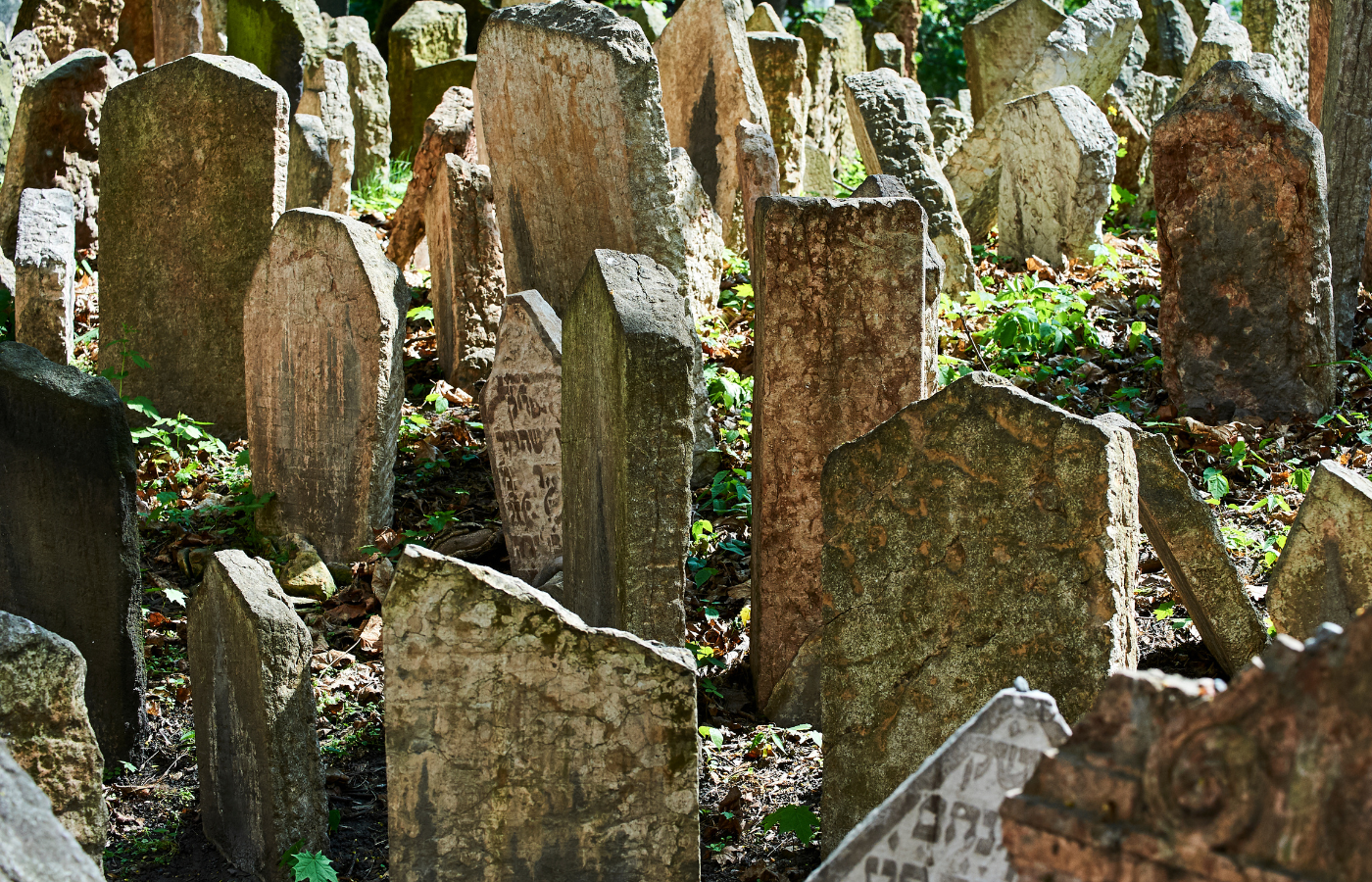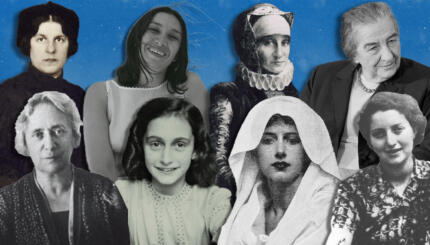Visiting an ancestor’s grave can be a meaningful and moving experience as well as an opportunity to glean a surprising amount of information about your family’s history. But many people — especially Jews whose families have moved a lot in recent generations — have no idea where their ancestors are buried. There are a number of resources available, some of them specific to Jewish ancestors, that can help. These include centralized and regional databases as well as obituaries, death certificates, funeral home and chevra kadisha (Jewish burial society) records, and more.
Centralized Databases
An online centralized database is a great way to start because you can search by the name of the deceased. So if you don’t even know which country or state, searching by name is a good place to start. There are a number of free online databases that are available to researchers. Most are generic burial sites but one was specifically created for Jewish burials around the world.
- JewishGen is the foremost site for Jewish genealogical research and it’s free with registration. It has more than 30 million records and hosts JewishGen’s Online Worldwide Burial Registry (JOWBR) which allows you to search combinations of surname, given name and town. The database has headstone photos linked to many million records so you can do a virtual cemetery visit through the site. It also contains an inventory of the current cemeteries and cemetery sections.
- Find-A-Grave, owned by Ancestry.com, is the largest online burial record site and includes records submitted from various denominational and non-denominational cemeteries around the world. You can do searches without being charged. Although this database does not include solely Jewish burials, sometimes it surfaces information about Jewish graves not available on JewishGen. It’s not unusual for difficult-to-read headstones to be transcribed differently in different databases so it’s worth trying more than one.
- BillionGraves is another large database of worldwide burials and is similar to Find-A-Grave. This site uses GPS coordinates for headstones and transcription of information from the actual stone engravings and does not accept data submissions that lack photo documentation. They collect information through their proprietary app that volunteers use when photographing headstones in the cemetery.
Regional Databases
In addition to centralized databases, there are databases that are specific to individual cemeteries or groups of cemeteries administered by the same cemetery associations. Sometimes, the best way to search is to start with a centralized database to find the region of the grave you are looking for and then visit the specific regional databases site for section, row, and plot location information. Once you know where your ancestor’s grave is located, look for a regional database that can offer specific plot information. Often cemetery associations that are responsible for the daily operations of local cemeteries are a good place to start. For example, the Jewish Cemetery Association of Massachusetts maintains an online database for the more than 125 Jewish burial places in Massachusetts.
Individual cemeteries may help too. For example, here are some of the larger cemeteries in the New York metropolitan area that have their own free, searchable databases:
With your help, My Jewish Learning can provide endless opportunities for learning, connection and discovery.
- Mt. Ararat Cemetery, Lindenhurst, Suffolk, NY
- Mt. Carmel Cemetery, Glendale, Queens, NY
- Mt. Hebron Cemetery, Flushing, Queens, NY
- Mt. Judah Cemetery, Ridgewood, Queens NY
- Mt. Lebanon Cemetery, Glendale, Queens, NY
- Mt. Moriah Cemetery, Fairview, NJ
- Riverside Cemetery, Saddle Brook, NJ
- Mt. Zion Cemetery, Maspeth, Queens NY
If your family member was a veteran of a US war, know that there are four different administrators of veterans’ cemeteries:
- The Department of Veterans Affairs has an online database that includes 155 national cemeteries in 42 states and Puerto Rico as well as 34 soldiers’ lots and monument sites. They also have a Grave Locator.
- Arlington National Cemetery and the U.S. Soldiers’ and Airmen’s Home National Cemetery are the only cemeteries managed by the Department of the Army.
- For predominantly World War I and II overseas burials of US military, the American Battle Monument Commission is responsible for the maintenance of American military cemeteries, memorials, monuments and markers in 17 foreign countries. This includes the famous Normandy American Cemetery and Memorial in Colleville-sur-Mer, France.
- The Department of the Interior’s National Parks Department maintains 14 national cemeteries within US National Parks. These include mostly battlefield cemeteries such as Antietam National Cemetery (Sharpsburg, MD), Custer National Cemetery (Crow Agency, MO), Soldier’ National Cemetery (Gettysburg, PA), and Yorktown National Cemetery (Yorktown, VA). Their site contains the names and contact information of all the locations but does not have a database of individual burials.
Other Sources of Cemetery Information
Aside from online databases, you can glean a great deal of information from obituaries, death certificates and records of funeral homes and chevra kadishas (Jewish burial societies).
Obituaries: Newspaper obituaries are an excellent source of genealogical information, including where a person might have been buried. The obituary likely also contains names of other relatives, living and deceased, places, dates and other interesting life accomplishments. If you can’t find an obituary for a specific person, try searching the name of a spouse, sibling, parent or child. You will probably be more successful in smaller towns than large metropolitan cities but it’s always worth a try. If your relative was connected with a specific trade or social group, you may also find an obituary in a trade publication or a society newsletter.
Death Certificates: Although governmental forms change over time, and each local jurisdiction may have their own forms, many death certificates can be helpful in locating the deceased’s cemetery. If you can’t find a death certificate for the person you’re interested in, try a family member using the working assumption that a spouse, for instance, would be buried in the same cemetery. Also keep in mind that death certificates are created in the place where a person died and not where they were buried. For example, if a person lived in City A, was traveling and died in City B, and was buried in City C, you would get the death certificate from City B.
Funeral Home Records: If you know where your relative lived, there may be only a few Jewish funeral homes in the area. If that’s the case, there might still be records at the funeral home detailing all the burials they provided services for including the cemeteries where burials took place.
Chevra Kadisha Records: If you’re looking for a cemetery in your ancestral town, there may have only been one Jewish cemetery. If the physical cemetery and stones still exist, consider yourself lucky. If not, there still might be a chevra kadisha register available from the Jewish community leaders of that town or in the local archives.
IAJGS Cemetery Project: The International Association of Jewish Genealogical Societies (IAJGS) Cemetery Project was designed to document all Jewish burial places around the world. This database does not have individual burial information, just the names of towns and the cemeteries that exist (or existed) in those towns. This is a good resource to use to find out if the ancestral town you’re interested in has a cemetery or if maybe there was a local cemetery in a neighboring town that was used by residents of the general area.
Conclusion
There are a number of resources available to help you locate your family’s burial places. Some are specifically Jewish while others are general, some are online and some are old world paper documents. Hopefully, some of the sources listed in this article will help you find the cemetery and grave you’d like to visit.
Interested in knowing more about your ancestors? Check out our new four-part course How to Research and Construct Your Jewish Family Tree with author and genealogist Jennifer Mendelsohn, beginning March 25th. Learn more and register here.



